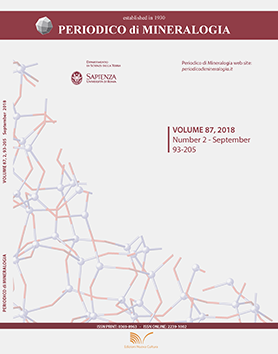The natural plant colonization of ultramafic post-mining area of Përrenjas, Albania
DOI:
https://doi.org/10.2451/2018PM729Keywords:
ex-mining serpentine area, heavy metals, nickel tolerance, organic matter, plant colonization,Abstract
A post Ferro-nickel mining land management needs to recognize the physical, chemical characteristics of soil and plants that grow naturally by tolerating the levels of heavy metals. The objective of this study were to: i) investigate and evaluate the natural process of plant colonization on abandoned ferro-nickel mining sites located on ultramafic substrate; to ii) understand the relationship between soil properties and species distribution and to iii) assess the potential of hyperaccumulator plants for the soil phytoremediation.
This area was divided into five 100 m2 plots that were representatives of the variability of the site, based on localization, land use and total vegetative cover. For each plot, the physicochemical characteristics of the soils, the inventory of plant species and the accumulation of Ni by all plant taxa were determined. The soils in the ex-mining area of Përrenjas appeared highly polluted by Ni, Co and Cr compared to the natural levels of the surrounding ultramafic soils. The toxic levels of trace metals and the deficiency of organic matter appeared as major constraints for plant colonization. In total, 96 plant species belonging to 26 families in the studied mining sites of Përrenjas were recorded. Several plants show the ability to tolerate and accumulate metals and may be useful for phyto-stabilization. Alyssum murale was the best candidate for Ni phyto-extraction technologies, with concentrations above 1000 mg/kg Ni in plant tissues.


